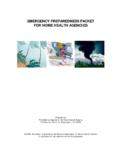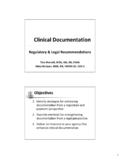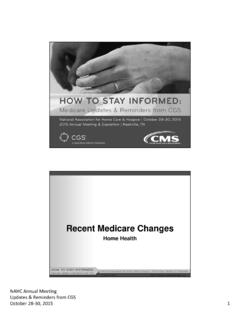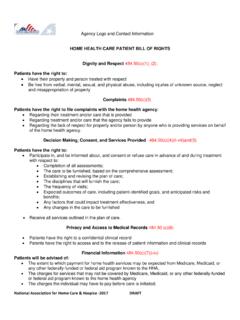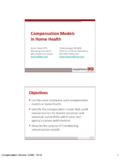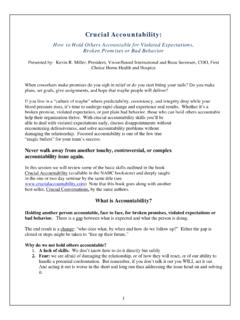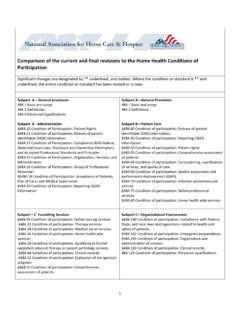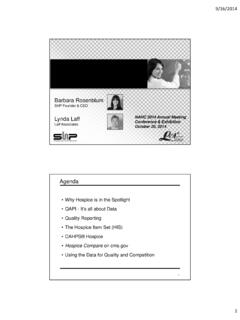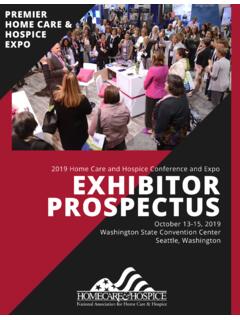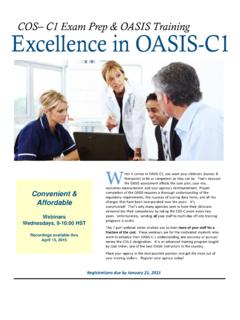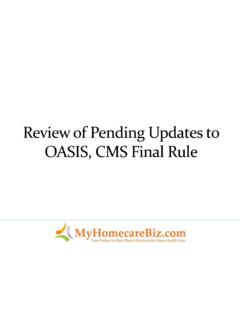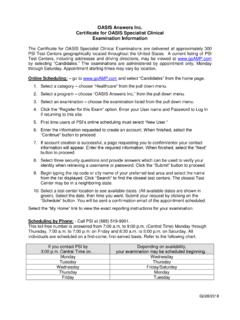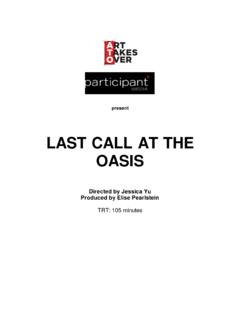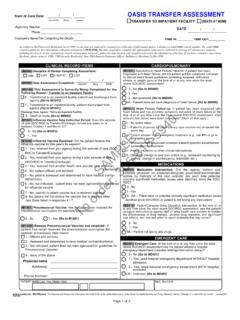Transcription of Coding/PPS/OASIS Terminology for Home Health
1 Coding/PPS/OASIS Terminology for home Health 2015, Selman-Holman & Associates, LLC 1 Case Mix Diagnoses Certain diagnoses were chosen by Medicare to contribute to the case mix or HHRG score. A casemix variable table indicates the number of points, if any, that diagnosis may provide in that particular equation (episode and therapy). Case Mix term used to identify resource use for Medicare providers. For Medicare home Health , certain M items indicate clinical severity, functional status and service utilization and determine the case mix score. HHRG home Health Resource Group (pronounced Herg ). Also known as the case mix score, it is determined by answering certain oasis data items in the clinical severity, functional status and service utilization domains. An example of an HHRG is C2F3S1. There are 45 exclusive home Health resource groups from C1F1S1 to C3F3S5 and 5 grouping steps, making 153 separate possible payment amounts, not including Non-Routine Supplies (NRS).
2 M0 or M (pronounced Moo at times) Is actually an M for Medicare and a zero, not an O. Of the M0 questions (now mostly just M), M1010, M1012, M1016, M1020, M1022 and M1024 are considered the diagnosis Moos. oasis agencies began collecting Outcome Assessment Information Set in1999. A collection of data items (originally referred to as M0s) developed for the purpose of outcomes. In 2000, oasis also became a means of determining payment under the new home Health prospective payment system. There have been several refinements since then. home Health is currently utilizing the oasis C-1/ICD-9 version. Palmetto, NGS, CGS and AHS Regional home Health Intermediary (RHHI), aka MACs (Medicare Administrative Contractors). Contracted with Medicare to pay claims and review medical records for medical necessity and other eligibility criteria Basics of PPS o The unit of payment is a 60 day episode; o Each episode is anticipated to be paid in two split payments, one billed on a Request for Anticipated Payment (RAP) at the beginning of the episode and one on a claim at the end of the episode; o Only claims provide line-items detailing the individual services delivered.
3 A claim can only be submitted once the physician s orders have been signed. Documentation of a face to face encounter with the physician is required prior to submitting a claim for a SOC episode. o home Health Resource Groups (HHRGs) are represented by CMS HIPPS coding on claims and are the basis of payment for each episode. HHRGs are produced through publicly available Grouper software (HAVEN or similar) that determines the appropriate HHRG when results of comprehensive assessments (made incorporating the oasis data set) are input or grouped in the software. o If beneficiaries choose to transfer to another HHA or if a patient is discharged and subsequently readmitted during the same 60 day period, the agency may receive a partial episode payment (PEP). o LUPA stands for Low Utilization Payment Adjustment. If fewer than 5 visits are provided to the patient, the agency is paid on a per visit basis rather than an episode payment.
4 O There are cost outliers, in addition to episode payments. There are special requirements for obtaining an outlier episode payment. Coding/PPS/OASIS Terminology for home Health 2015, Selman-Holman & Associates, LLC 2 o Payments are case-mix and wage adjusted. o Diagnoses must match on the oasis , Plan of Care (POC) and claim. Although many believe the oasis only allows six diagnoses, one must remember that the oasis items are just part of a comprehensive assessment. The comprehensive assessment should include all pertinent diagnoses. The Conditions of Participation require all pertinent diagnoses be placed on the Plan of Care. The claim takes up to 25 diagnoses. The number of diagnoses an agency may use is usually dependent on the software used.
